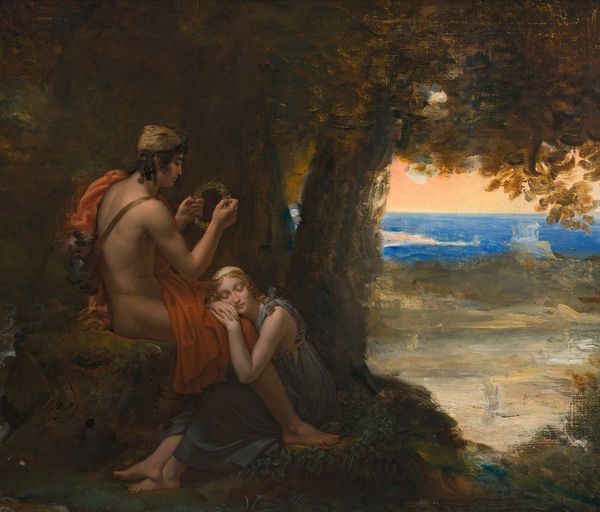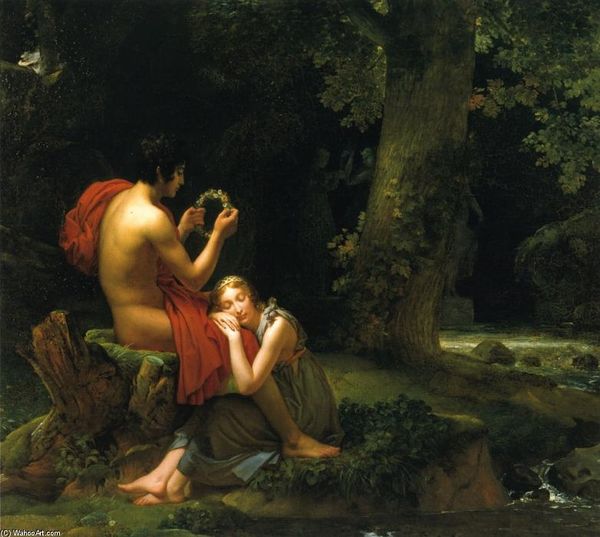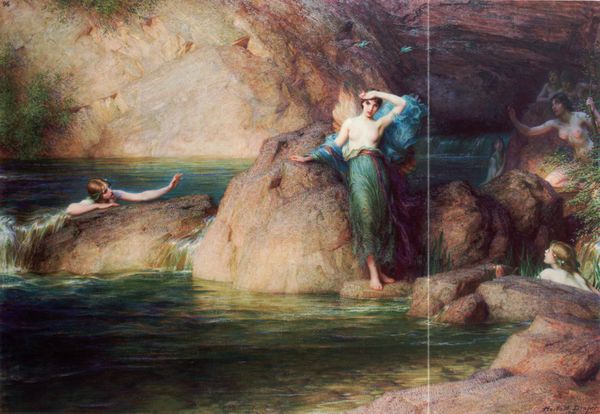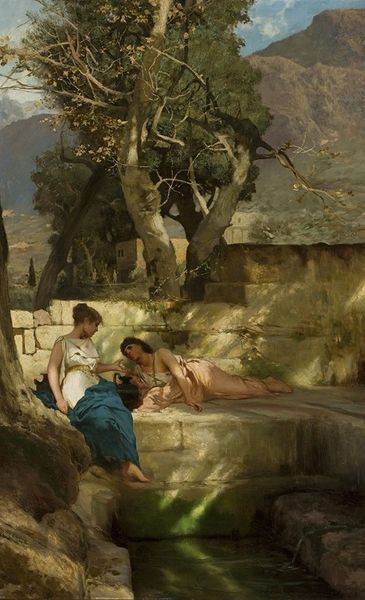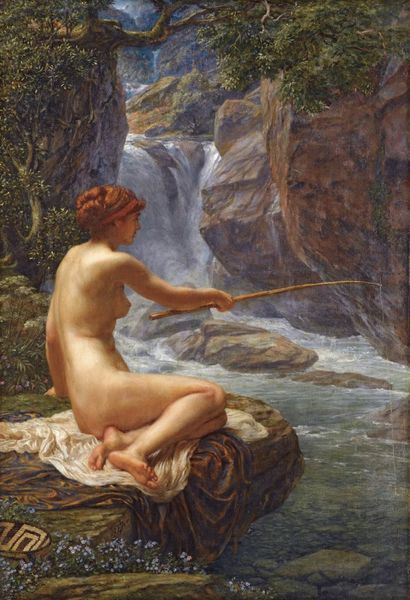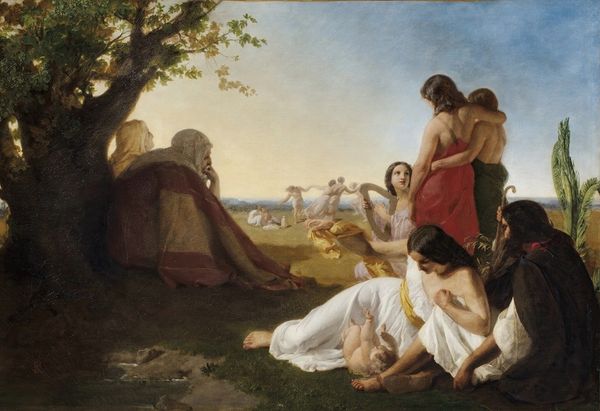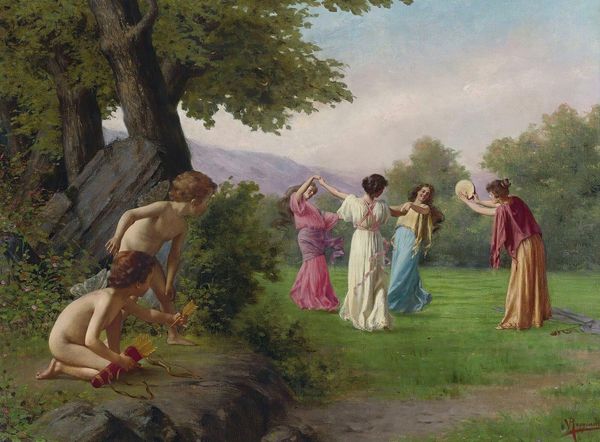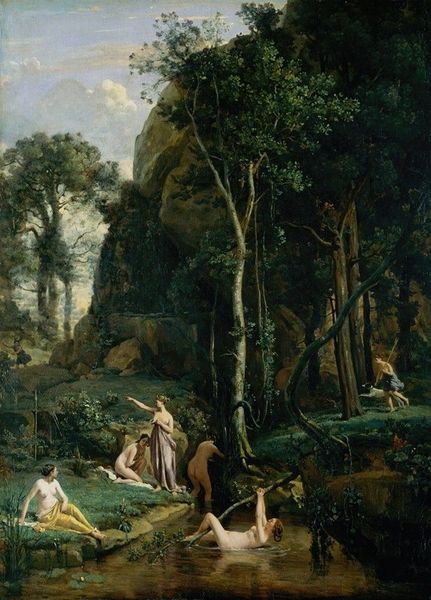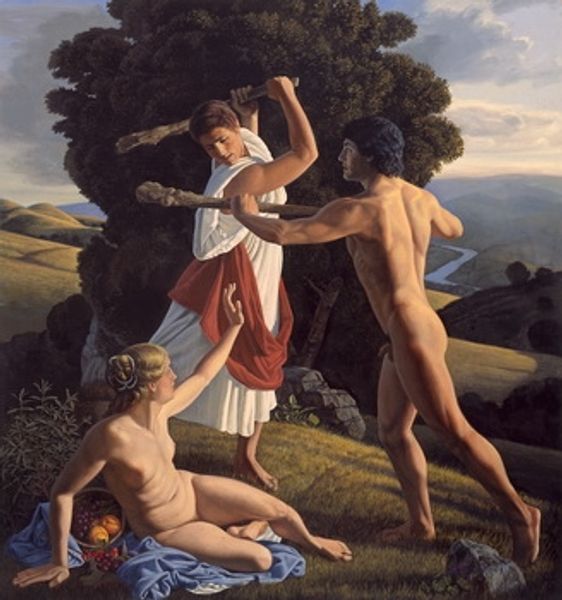
painting, oil-paint
#
painting
#
oil-paint
#
landscape
#
romanticism
#
history-painting
#
academic-art
#
nude
Copyright: Public Domain: Artvee
Curator: This is Christoffer Wilhelm Eckersberg's "Hagar and Ishmael in the Desert," painted in 1812. It's an oil on canvas that beautifully illustrates a moment from the Book of Genesis. Editor: My first impression is the contrasting moods. Hagar, draped in that bold red fabric, seems active, desperately seeking water, while Ishmael looks languid and almost resigned. There's a strong sense of quiet desperation conveyed by the scene's construction. What materials have conveyed this feeling? Curator: Eckersberg, deeply immersed in the academic style and Romanticism, depicts Hagar and her son cast out into the wilderness. The scene is rife with artistic liberties. The landscape doesn't particularly read as desert, even, does it? Eckersberg creates more a scene for contemplation. It definitely participates in wider discourses of empire and orientalism though. Editor: Yes, definitely a *very* Northern European take on a desert! But that attention to detail – the way the light catches the copper jug Hagar uses, the rough texture of the rocks, makes you consider the actual labor involved in procuring even a drop of water. I keep wondering, what dyes colored her garment? Curator: It's worth remembering that this biblical scene, while personal to Hagar and Ishmael, resonated with European audiences grappling with social displacement and religious identity. The image speaks to universal themes, of exile and salvation—of people dispossessed throughout society. Editor: Absolutely. And how this salvation comes—we understand it comes—to involve certain objects, or supplies like water. That reminds us that even miraculous deliverance is still bound up with the mundane physicality of living. Where exactly, or from whom, does such salvation really arrive? Curator: Yes, the painting cleverly intersects a grand historical narrative, the stuff of national myth, with everyday needs—and renders them timeless. The Royal Danish Academy certainly rewarded him for that with a professorship, helping build the institution and legitimizing a national artistic identity. Editor: This balance of power with these raw materials interests me! Thanks to the quality of paint materials from the time, the bright colour is what really holds my attention, more than the myth perhaps. Eckersberg offers plenty for analysis across various viewpoints! Curator: Indeed. From a historical lens, this work speaks volumes about the shaping of national identity. Editor: And I appreciate how it grounds the grand narrative in the palpable realities of existence and human need.
Comments
No comments
Be the first to comment and join the conversation on the ultimate creative platform.
